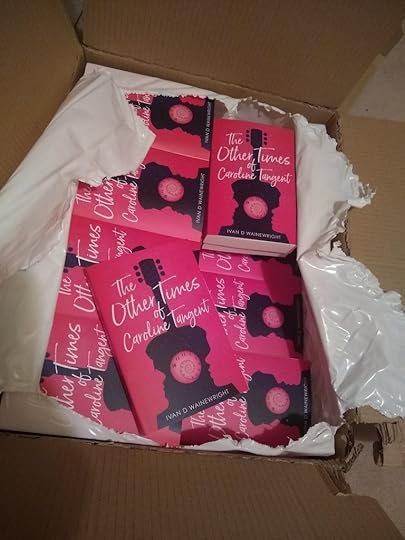Ivan D. Wainewright's Blog, page 3
May 30, 2021
The Instagram Photos From My Novel’s Blog Tour
During the recent blog tour for my novel (organised by the wonderful Anne Cater at Random Things), many of the Instagram book reviewers posted amazing photos of my book alongside their reviews. Here they are all together! A plethora of guitars, books, vinyl, flowers, timepieces and of course coffee!
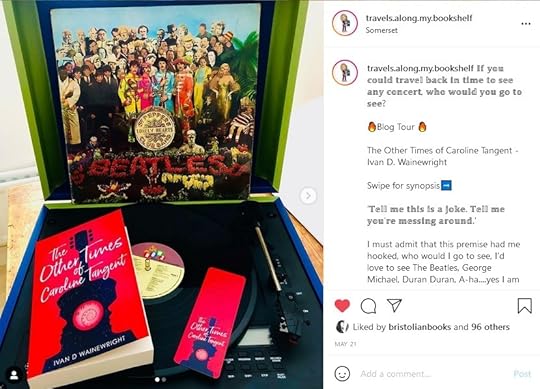 https://www.instagram.com/travels.along.my.bookshelf/
https://www.instagram.com/travels.along.my.bookshelf/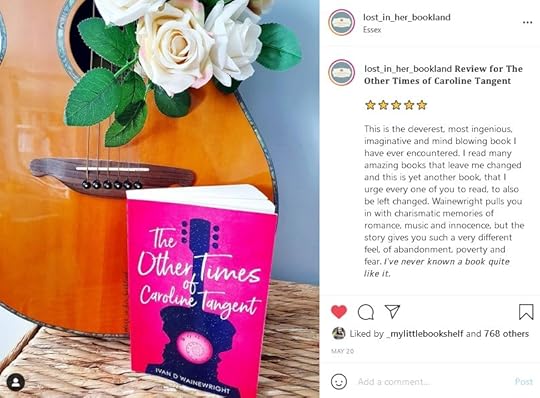 https://www.instagram.com/lost_in_her_bookland/
https://www.instagram.com/lost_in_her_bookland/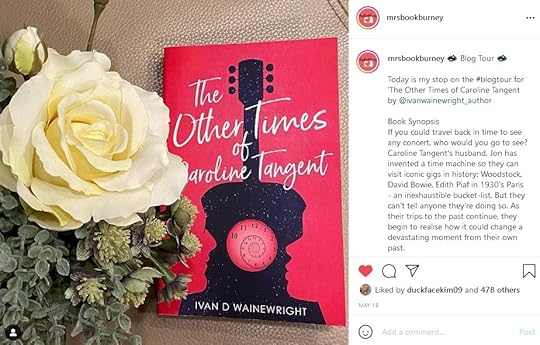 https://www.instagram.com/mrsbookburney/
https://www.instagram.com/mrsbookburney/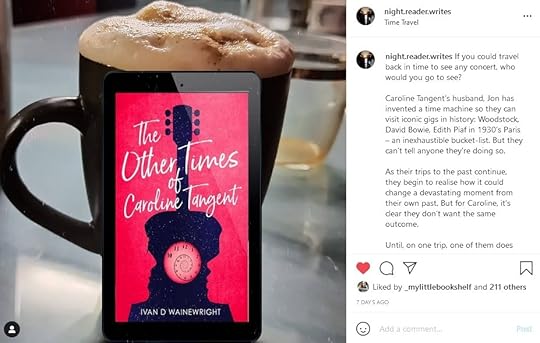 https://www.instagram.com/night.reader.writes/
https://www.instagram.com/night.reader.writes/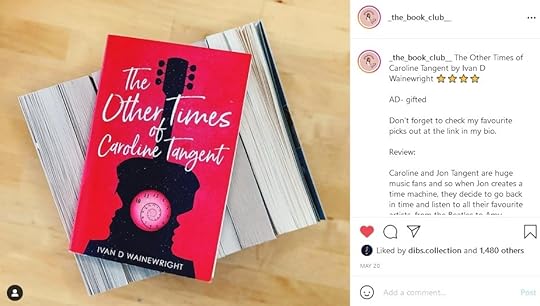 https://www.instagram.com/the_book_club_/
https://www.instagram.com/the_book_club_/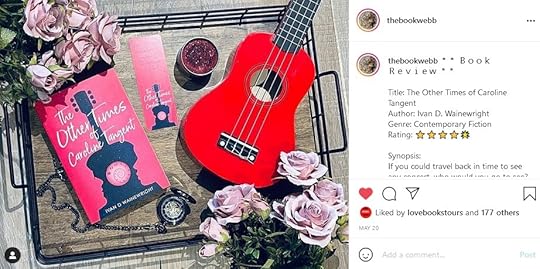 https://www.instagram.com/thebookwebb/
https://www.instagram.com/thebookwebb/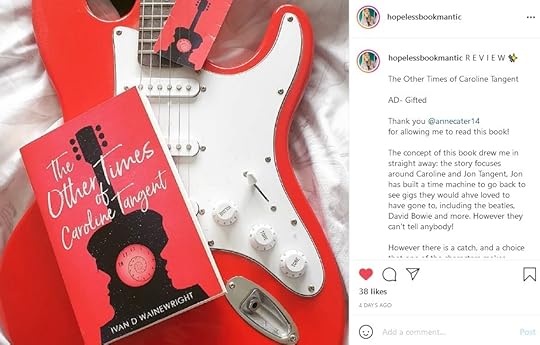 https://www.instagram.com/hopelessbookmantic/
https://www.instagram.com/hopelessbookmantic/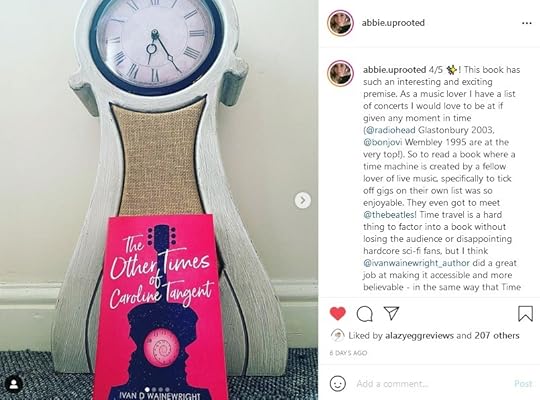 https://www.instagram.com/abbie.uprooted/
https://www.instagram.com/abbie.uprooted/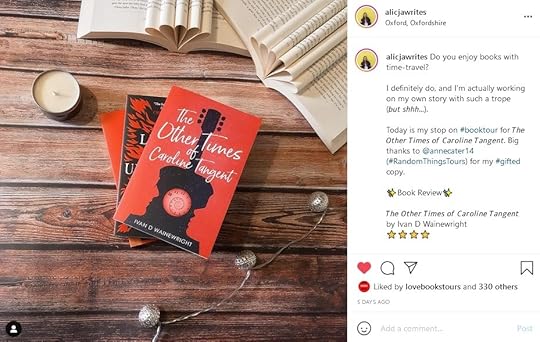 https://www.instagram.com/alicjawrites/
https://www.instagram.com/alicjawrites/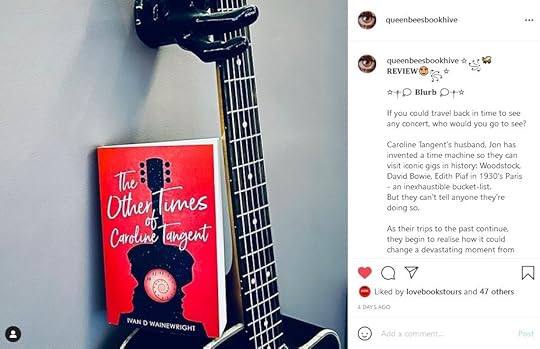 https://www.instagram.com/queenbeesbookhive/
https://www.instagram.com/queenbeesbookhive/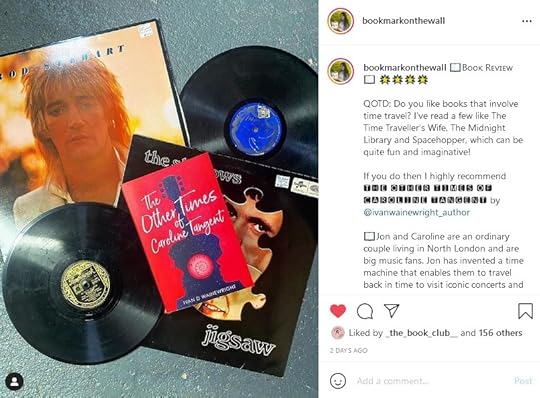 https://www.instagram.com/bookmarkonthewall/
https://www.instagram.com/bookmarkonthewall/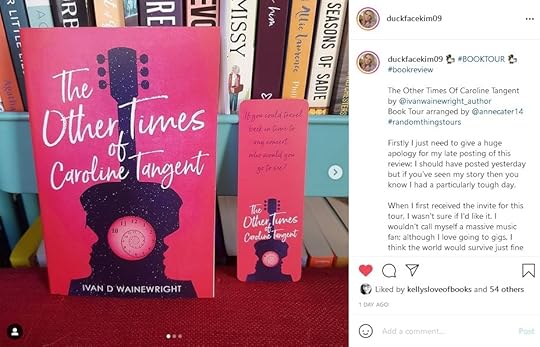 https://www.instagram.com/duckfacekim09/
https://www.instagram.com/duckfacekim09/The post The Instagram Photos From My Novel’s Blog Tour first appeared on Ivan Wainewright.
My Top 5 Novels About Music
Daisy Jones and the Six, by Taylor Jenkins Reid. When a novelist tries to do something very different in their style of writing, they can succeed or fail dramatically. Daisy Jones is most definitely a hit. There’s nothing unique about the concept – a fictional band trying to make it big – but the whole book is written as if the band members were being interviewed. It takes a bit of time to get into it but it wasn’t long before I wasn’t thinking about that, and instead I was captured by the story. And when it comes to ‘fictional band’ books, this is one of the best. Strong characters, the mood of the seventies’ music scene, I could even see and smell where they were playing. Loved it.
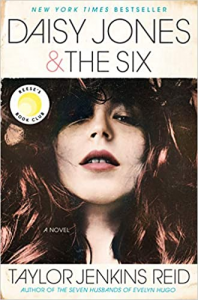
High-Fidelity, by Nick Hornby. I still think this is one of Hornby’s best novels. The ambience of the record shop – vinyl, obviously – the ‘top five’ lists the main character and his colleagues create, the traumas he goes through. Back in the nineties, I could identify with it on many levels! It’s all about the music which Hornby invites us to remember, while of course, not forgetting, it’s about our relationships – what Nick Hornby writes best. It was written pre-Spotify days but I’m sure it would come with a playlist if it was written now.
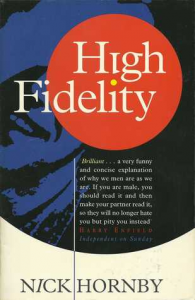
The Bear Comes Home, by Rafi Zabor. Twenty-three years ago, I first read The Bear Comes Home and it’s still one of the best novels about music. An existential saxophone-playing bear, jazz, New York, a jailbreak – what’s not to love?! I can just imagine sitting in those smoky, New York joints hearing The Bear play alongside real-life jazz virtuosos. I wish I could have been there to see The Bear play, and I really Rafi Zabor had written more novels.
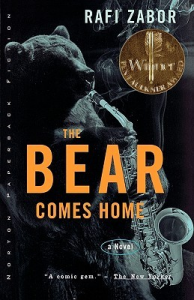
Station Eleven, by Emily St. John Mandel. I know this book is in a lot of people’s ‘top x lists’, but for good reason. It’s such a great novel. Yes, it’s set in a post-pandemic world, but as the author herself has said, she doesn’t consider it science-fiction. It may be less of a music-oriented novel than the others in this post – the musical influence is because the main character, Kirsten (with her old, graphic novels called Dr Eleven) is part of a nomadic group of actors and musicians who tour the Great Lakes region, performing Shakespeare plays and classical music – but that doesn’t mean the music isn’t important. It is many of their interactions and encounters which I remember and think about.
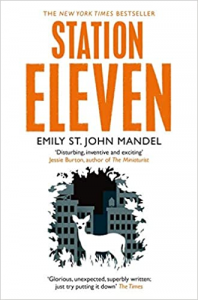
The Commitments, by Roddy Doyle. Written in Doyle’s inimitable style of primarily dialogue, the story tells of two friends trying to form a band and recruit a manager, Jimmy Rabbitte; they subsequently lose band members and move onto being told to play ‘Dublin Soul’. It’s hard to read now without envisaging the film and hearing the soundtrack in your mind, but at the time, the book seemed groundbreaking for me. What Doyle does best is recognise that although it’s about music, it’s really about the tensions and drama between all the characters, their jealousy, their backgrounds. Hard to believe it’s thirty-five years since it was published!
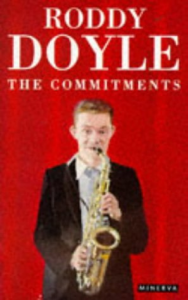
May 21, 2021
Hidden Rock Songs!
With the release of my new novel, I thought that now was an apposite time to show again this “quiz” I came up with last year during lockdown. Hidden in the picture are 50 rocks songs – how many can you find?!
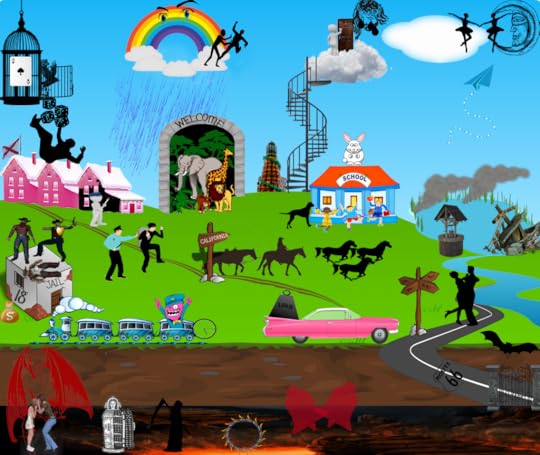
May 17, 2021
Publication Day!
Links to places to buy (ebook & paperback): Where to buy
Or order from your local bookshop!
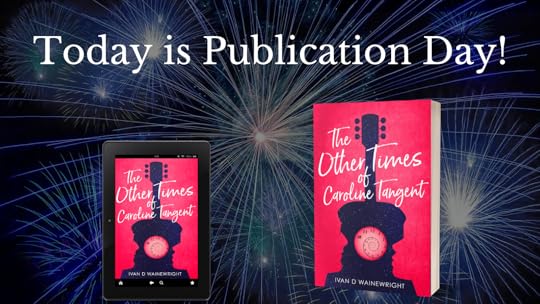
May 12, 2021
9 Books Which Got Me Hooked on Speculative Fiction
Specualtive fiction covers a broad spectrum: classic sci-fi, fantasy, alternative history, time travel, magical realism and many more sub-genres. But the novels I especially love are those which aren’t “classic” science fiction/fantasy, but instead are often set in our ‘real world’ but with a slight shift to the left (or right). These are some of my favourites; apologies for the brevity of detail on each book, but I don’t want to include spoilers if you haven’t read one! And the list is really just to show you the sort of things whch have influenced me over the years.
E Nesbit’s, The Town in the Library: This might have been the first ever ‘speculative fiction’ book I read as a child, although I doubt the term was barely used then. The book is about Rosamund and Fabian (classic E Nesbit character names!) who build a town out of books in their library which they then simply walk into; only to find themselves trapped there when they go inside.
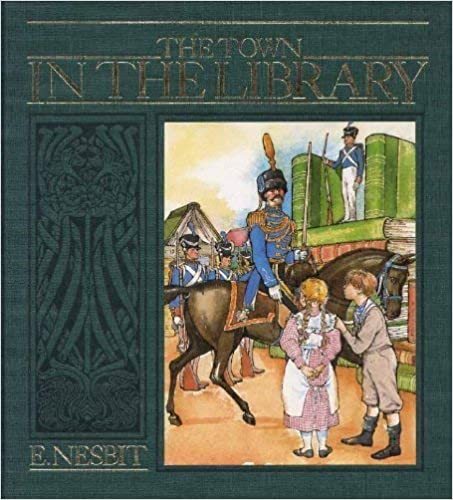
CS Lewis’s Narnia Chronicles. My brother and I devoured these when we were kids, either reading them or having them read to us by our parents. The concept of the wardrobe as the door to another world may not have been invented by Lewis, but it was new to us! And I see it now in so many contemporary books. It was also the illustrations which were so evocative.
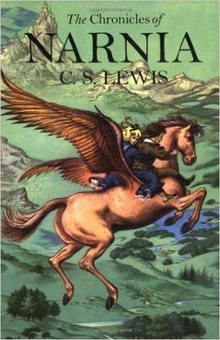
Iain Banks, The Bridge: This was one of Banks’ first novels I read, and as he said himself, it’s the closest to a crossover into his science fiction writing as Iain M Banks. It’s a hard book to precis in a few words, save to say that it revolves around three separate stories which come together and I was drawn into it deeper and deeper the more I read it. Goodreads supplies a better, quick summary.
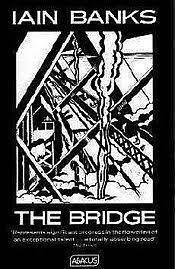
Claire North’s, well, take your pick! The First 15 Lives of Harry August, Touch, The Sudden Disappearance of Hope. Et al! Claire is one of my favourite authors and I’m constantly in awe of how she writes so many wonderful novels so quickly with such facsinating and different plots and concepts. But if I had to choose one, it would be Harry August.
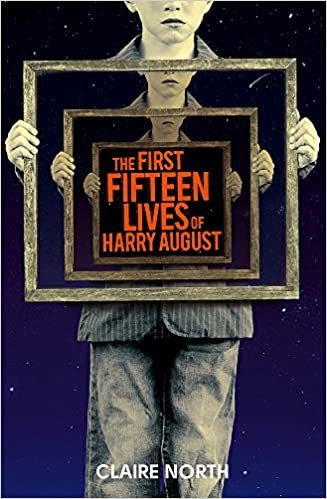
Scarlett Thomas’s The End of Mr Y. I think this is Thomas’s best book. It does what all good spec fiction books do: starts you in our world, provides a mystery, opens up all sorts of possibilities and then dives into the alternative concepts of where the story is heading. It kept me up very late at night reading this.
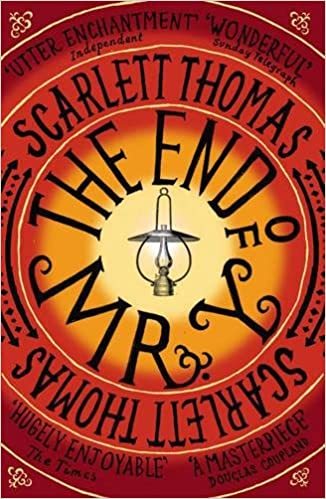
David Mitchell’s The Bone Clocks. Again, I could have chosen most of Mitchell’s books to be in my favourites (and I am especially fond of Number 9 Dream) but The Bone Clocks is immense. One of his multiple narrator novels, this turns and twists and creates amazing characters which he takes on into further books as well. I loved it.
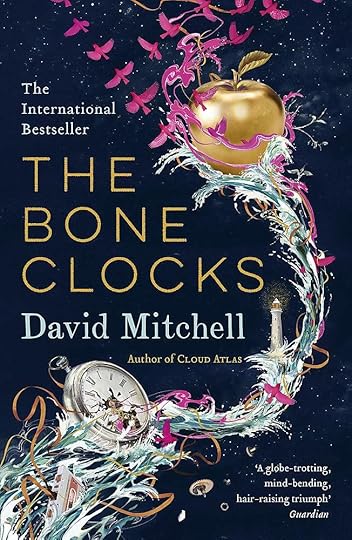
David Bowker’s The Death Prayer. Some people may not have heard of Bowker. He’s written various genres but when I read this over 25 years ago, it really captured my imagination. A policeman in northern England with a special ability which helps him capture criminals.
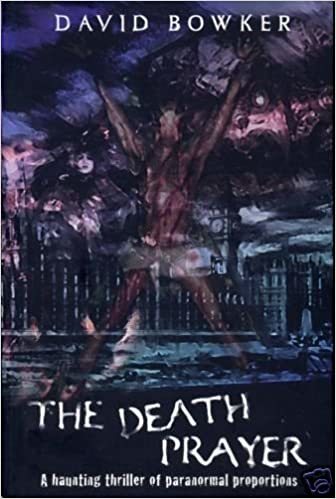
Matt Haig’s How To Stop Time. And yet again, an author who I would eulogise over forever. I nearly added The Midnight Library as my favourite, but I think How to Stop Time just pips it for the time it covers (literally) and the wonderful story Haig weaves.
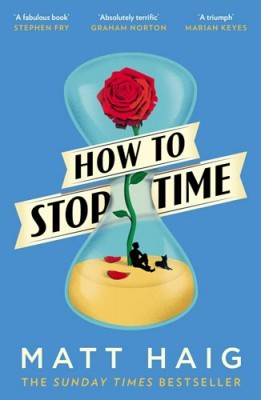
Audrey Niffenegger’s The Time Traveller’s Wife. It’s impossible not to include this book in a list of the greatest speculative fiction novels. More than any other book of its genre, it showed that time travel can be literary fiction as well, and I’m sure it was read by many, many people who don’t consider themselves science fiction fans.
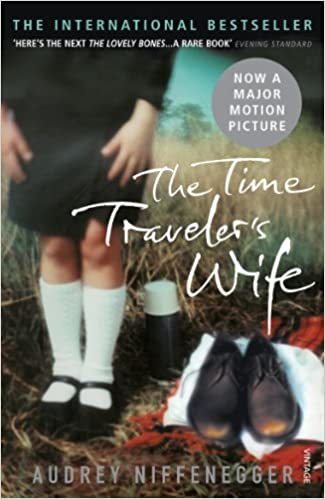
And all that is without mentioning Philip Pullman, The Girl with all the Gifts, The Night Circus, To Say Nothing of the Dog, Nick Harkaway (I love his writing!), Jeff Noon’s Nymphomation or Automated Alice, the original Alice (!), Station Eleven… Hmm, I might need a Part II for this post in the future!
May 3, 2021
Researching 1970s New York (as a British Author)
Part of my novel is set in New York in the 1970s. I have been to Manhattan myself several times over the last twenty years, but that couldn’t tell me what it was like in a far earlier and very different era. Which meant I had to research a number of specific and more generic things. (And don’t worry, there are no spoilers here if you haven’t read my book yet!)
The first thing which I had to do was find out more about Washington Square Park. That is where Caroline and Jon ‘land’ (arrive) when they visit their first gig in New York. Fortunately, there are online maps of the area from that time, and lots of photos and videos. The videos were wonderful and provided my own way to virtually time-travel back to the sixties and seventies; a great way to waste a few hours.
I also needed to know how the streets and shops differed from today, the sort of cars and vehicles on the streets, how Greenwich Village looked compared to now, and what Brooklyn was like in those times. I found out what institutions and buildings have since been decommissioned or moved premise. It took a lot more reading, Googling and talking to a few helpful people.
There were also more generic challenges such as finding out what was on American telly at that time, who was famous in that era, making sure I had my Presidents right (and my British PM) and what phrases and words young Americans might have used in those days. And, of course, the music and musicians of the time.
One fun thing which took me a while to crack was what sort of prices things would have cost in the 1970s. You can work out some of it from looking at generic websites which tell you what the dollar was worth then compared to now, but that doesn’t dig down to the specifics I needed to know. How much was a cup of coffee and a stack of pancakes in a late-night cafe (I found photos of old menus online), how much would a night cost at a hotel/cheap guest-house, a can of antiperspirant, a coat from a secondhand store, and some far more significant prices of things which I won’t share here because they would provide spoilers. Save to say that I had to find some obscure, detailed journals and research papers to get an idea of those costs.
Even after all that, I received some (very gracious!) feedback from a reader during my pre-sales period that I had got one fact wrong. Annoying, but not story-defining, thank goodness. If I do sell enough to re-print the paperback, then I will correct that in my second edition!
April 29, 2021
The Challenges of Writing About Time Travel
I love time travel, be it in books or films. There’s so much you can do with it, and it’s so interesting to consider. But there are challenges for the author when writing in this genre. This post discusses some of the issues I had to overcome in The Other Times of Caroline Tangent. (Oh, and if you haven’t read it yet, don’t worry, there are no spoilers here!)
If you are going to send people back in time and you don’t want to leave them there, then the first question is how you bring them back to their original time! I didn’t want Caroline and Jon to use a ‘large vehicle’ to travel in (for example, as in HG Wells’ Time Machine, or the wonderful Back to the Future), but that meant that they still needed to be able to return when they wanted – hence my invention of a small hand held device they call a ‘time-pen’ which connected them with their real time. Once I’d thought of that, it also gave me several further ideas for incorporating it into the plot.
I decided that although I did want the science to be as believable as it can be, and therefore Jon explains early on in the story how he uses Einstein’s theories of wormholes, that isn’t what the book is about. So that is explained and then, hopefully, simply accepted by the reader.
For a book like Caroline Tangent, where you’re taking characters to specific historical events, some which the readers may well have been to themselves, it was important to me to be as accurate as possible. The dates of the gigs, the bands, the songs played at a specific concert and so on, they all needed to be factual. Even the weather as it was on those days. I suspect that some of the people who read this book will be far more expert than me about some of the acts, so I hope I’ve done history justice.
In terms of Caroline and Jon’s trips, they had some very specific challenges: where to get clothes which were right for a particular time – not so difficult because in 2021, we can buy or make retro clothing quite easily; how to get tickets for a gig – that was fun and depended each time on the concert they were going to; but the biggest challenge was how they could get cash for a particular era, whether it was old British coins or US dollar bills – you can’t use your twenty-first century credit card in the 1960s! I went round in circles a lot over that while I was thinking about it. In the end, I decided they needed to be slightly devious…
Of course, there is always the question of the butterfly effect. I wanted to avoid some of the more usual sci-fi tropes, but you can’t avoid the question of how time might change in the future if someone does something in the past. For me, that turned out to be a bonus in terms of developing the plot and the characters…
And there were additional challenges which I had to overcome which I can’t discuss here without introducing a spoiler or two! I’m sure you’ll spot them when you do read the book!
April 28, 2021
Using Nielsen Publishing Services as an Indie Author
Because I decided not to distribute my books exclusively with Amazon, I used Nielsen for two specific parts of my self-publishing process:
Buying ISBN numbersTheir Title Editor ServiceHere’s my experience of doing that. Bear in mind, as I write this, I am still three weeks away from my publication date and I have made some mistakes along the way, but I hope it’s useful for you to learn from my errors. (Remember also, if you solely use Amazon’s KDP service for ebooks and POD paperbacks, then you won’t need to do all this. If you want to know why I decided not to go exclusively with Amazon then read my blog on Printing Paperbacks with Clays.)
I started this process about four months before my publication date (partly because I still needed my copy-editing completing and because I knew it would take time to get the books printed), but in theory, you could do it more quickly. You can see in each of my sections below how long each process took.
Buying ISBN numbersThis was very simple. I need an ISBN number for each format of my book, which in the first instance is a paperback and ebook (and if I produce an audiobook then I’ll need one for that too). It costs £89 for one ISBN, or £164 for ten, so that was an easy decision. You can see more information on Nielsen’s website. Once you’ve paid, they send you the ISBN numbers within a matter of hours.
What is Nielsen’s Title Editor Service and why do you need it?If you want online bookstores to be able to find your book (including Amazon for paperbacks in my instance), then you’ll need to register with Nielsen’s Title Editor service. The good news is that the Standard service is free. The registration is simple enough but it took six working days for them to process me and provide a login and password; a fairly standard timeframe I believe. You can then add your book’s details in their online database. Nielsen then provides an automated “data feed” of all their books which online bookstores register to use, and when the stores receive the data feed with your book in it, they will add it to their listings. See below for how long this takes.
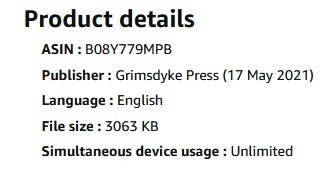
When you do register, you need to decide if you are going to use a name for your imprint – i.e. a Publisher Name – or publish under your own name. Personally, I feel it’s more professional to create your own unique name for the imprint – you can see how it looks on Amazon’s book listing in the image here. You don’t have to register the name as a trading company but you might decide to do that depending on how you want to receive income, your legal requirements etc (talk to a qualified lawyer/accountant about that if you want!); but you do need to make sure it’s unique and you’re not “passing off” as another publisher. I did also buy a domain name for my imprint.
You also need to consider how you are going to distribute the book and enter that information in Nielsen’s form. I’m using Clays’ agreement with Gardners to distribute mine, and there are other similar companies to Gardners.
A few other tips:
The standard service enables you to enter a Short Description for your book which some of the online stores will pickup – but see below for limitations/issues with this. This description is limited to 350 characters and you can’t incorporate any HTML for formatting (italics, bold etc).The Publication Status will be ‘Forthcoming’ until your publication date.You can enter the price, publication date, the categories the book falls under etc; that’s all fairly self-explanatory.You add ‘jacket photos’ of the book for each version by uploading a JPG for each one.If you don’t know everything at this time, you can come back and add/update the information later.Finally, the Availability field is important; see the section below on this.
How Long Does it Take For Online Stores to Add it to Their Listings?On Nielsen’s website, it says “The book trade standard is [to send new title information] at least five months ahead of your publication date,” which worried the heck out of me, as I thought that it might take the online bookstores five months before they listed my book! The good news is that this isn’t the case (or at least, wasn’t for me). It does vary by website, but for me, Amazon was very quick and had my paperback listed on their site in a matter of days. However: it is now less than three weeks before publication and at this point, although they’re listing it, Amazon are still not letting people buy pre-sale copies, which is very frustrating!
But the good news is that other websites also soon picked up my book in their updates, and BookDepository and Waterstones also added it within a couple of weeks, Foyles and Blackwells soon after that. But Hive and Bookshop.org didn’t list it on their sites until about four weeks before publication date, and WH Smith also did after that. But all those bookstores, as soon as they had it listed, were offering to take pre-orders, which was good for me.
A Note on the Availability FieldWhen you enter your book’s details in the Title Editor, you need to select an Availability status from their list of options. I couldn’t find anything about this online so I hope I have done this right. I initially selected ‘Not Yet Available’ for the paperback version, which was correct at the time as my books were yet to be printed. When I had received the printed paperbacks, I changed it to Available – but within one or two days of doing that, Book Depository started to show on their site that people could now buy the book and they would send it out to them now, even though the publication date was still three weeks away! Not a complete disaster for me, as I only had a few pre-orders of the paperback as far as I was aware, but not ideal. So I changed the Availability to ‘In stock’ instead and the other stores are now showing that it is still available for pre-order. (NB I contacted Book Depository and that is all sorted).
On publication day (or maybe a couple of days before), I will change the Availability to Available.
(If anyone can tell me if this is the right way to be using this field, please do email me or leave a Comment below!)
How to Get Your Synopsis on the Bookstore Listings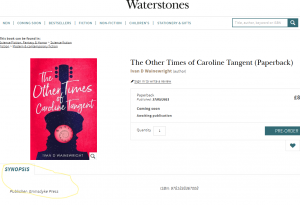 [Click the image to expand]
[Click the image to expand]Although Amazon picked up my short description on their listing for my book, some of the other stores didn’t; e.g. Waterstones. See the image to the right here for how it looked initially. I discovered that some stores only seem to include Nielsen’s “Long Description” (aka Synopsis for stores such as Waterstones), and to use that you have to pay for Nielseen’s Enhanced Title Editor service, another £79 per year per edition! (i.e. a paperback and Audiobook would be two editions). So, I bit the bullet and bought that for just my paperback. I think it will be useful for at least the first year of its publication. That has worked – sort of – and all the online stores now incorporate that in their listings. The Enhanced service does also mean you can add far more information about books, and Nielsen claims sales will increase. See their page on the Enhanced Service for more details.
You can also add HTML formatting on the Long Description, such as italics, bold, different size fonts and so on. That works fine within Nielsen’s interface. BUT none of the online stores where I’ve seen my book seem to incorporate that formatting, which is very frustrating. In fact, some just run all the text into one long paragraph. I’m sure there must be a way to make the formatting work on their sites, but I haven’t found out how yet. If anyone knows, please do tell me!
One final caveat to this: I did wait several weeks after first using the free Standard Title Editor service to see if Waterstones et al would pick up my Short Description on their site, but then I gave in and bought the Enhanced service. I don’t know whether, if I had waited longer, those bookstores would have eventually incorporated my Short Description. If so, that would be fine maybe; but if not, then sadly I don’t think there is a choice – you need the Enhanced Service. Again, if anyone knows differently or has a different experience, please do add this in the Comments below.
Where I am NowI will update this section in the future, but at this moment, it is just under three weeks til my publication date. All the online stores are taking pre-orders, I can tell from my stock levels at Gardeners that a few have been sold (which is exciting!) and hopefully Amazon will start selling the paperback soon too. Time will tell if this was all worth it, or whether I should simply have used Amazon’s POD service. I’ll let you know!
April 20, 2021
Printing Paperbacks with Clays
For my forthcoming novel, The Other Times of Caroline Tangent, I decided I would produce paperback copies through a book printer rather than Amazon/POD. This is my experience of doing so.
Why did I do this?Three reasons:
I didn’t want to be exclusive to AmazonI can get a lower cost-per-book by using a printer (as long as I sell them!!)I can control the qualityAnd an added bonus from using the printer I selected is that they have an agreement with Gardners so that Gardners will distribute my bookHow was my experience?In terms of producing the book – excellent! It’s still a few weeks away from publication date so we’ll see later if it works financially…
First, pre-sales before I placed an order: I decided to use Clays (based in Suffolk here in the UK, a company who prints 150 million books every year, so they are well established!) Belle from Clays could not have been more helpful. I asked her a ton of innocent, silly, first-time self-pub questions, across a whole series of emails, and from the word go, she answered all of them helpfully, patiently and incredibly quickly. In fact, forget publishing for a moment, it was one of the best Customer Service experiences I’ve had for anything I’ve bought in years! They even sent me sample books they had printed for other authors. And all this several months before I was ready to print the books, so there was no guarantee for her that I would purchase.
If you want to see more about their services, they have a dedicated section on their website for indie authors which is extremely helpful: www.clays.co.uk/indie-publishing/.
Next, I had to learn some lingo and how to format books. I bought Vellum to do my own typesetting (I’ve written a separate blog post about that), which was useful and helped immensely for the core formatting of the paperback. But one thing I still needed to learn about was Printer Marks – Crop Marks. This is because a printer doesn’t print to the “edge” of a sheet of paper, so you need to provide guidelines for where they should cut. The good news is that there are standards for this, and you can use Adobe Acrobat DC to do it (and other software too). The best website I found to help guide me through the specifics of this was PrintSouth. (Tip: if you wait until you are ready to send the manuscript to your printer, and then download a 7-day trial of Acrobat DC, you can use it quickly enough so you don’t have to buy the software. That said, if you need to do another book, you can’t use that trick twice.)
You also need to learn how to calculate spine widths for your book, but that’s comparatively simple and Clays provide a useful spreadsheet to help you calculate it.
When it came to the book cover, I had already decided to use a professional cover designer and I’m very glad I did. Not just because the cover is a hundred times better than I could ever do, but because she knew exactly what format to provide to Clays for the printing. That was a real weight off my shoulders. (If you’re interested, my cover designer was Sophie Burdess, who also designed the cover of The First Fifteen Lives of Harry August. I can’t recommend her highly enough).
How was the quality of the final book?Excellent. It’s printed digitally, but it looks good, feels good, very professional. All round fabulous.
Clays also sent me a number of copies to my house, which I’ve used to send on to book bloggers, media, friends and family!
Working with GardnersThis is a wonderful bonus for me. Clays also offer a service with the book distributor, Gardners, which means that Clays provide books direct to them, and when an online retailer or a bookshop wants to order a copy(s), Gardners send it straight out to that store. I love this. Yes, it costs me a few pounds but Clays provide clear pricing and it means any bookseller anywhere can get hold of a copy quickly and I don’t have to do anything!
To SummariseIf you think printing paperbacks is for you, then I can certainly recommend the process. Now I just have to sell them all!!
If you do have any questions, I’d be happy to try to help. Leave a comment below, or you can contact me through my website: ivanwainewright.com.
April 16, 2021
Paperbacks of Caroline Tangent Arrive!
The paperback version of my forthcoming novel, The Other Times of Caroline Tangent has now been printed, and is winging its way to Gardners for distribution to online retailer and the high street.
But I also had a few copies sent to me, for bloggers, media and my mother! Very exciting  !
!
